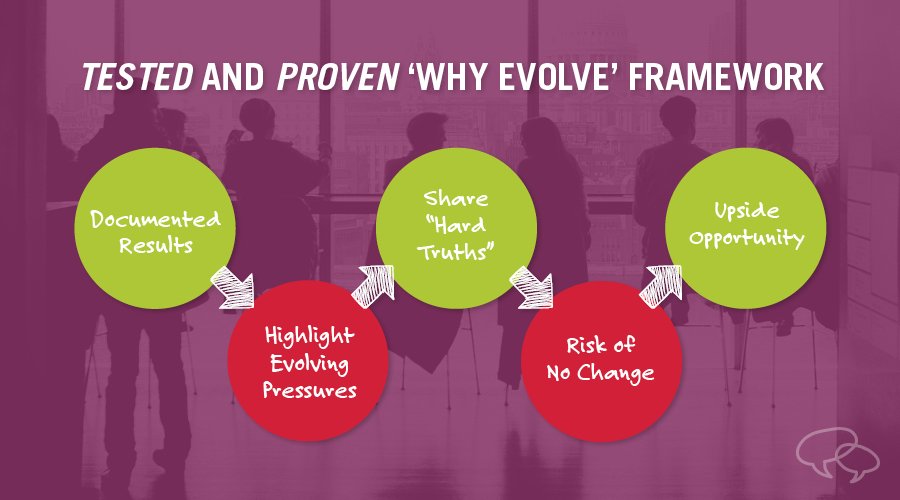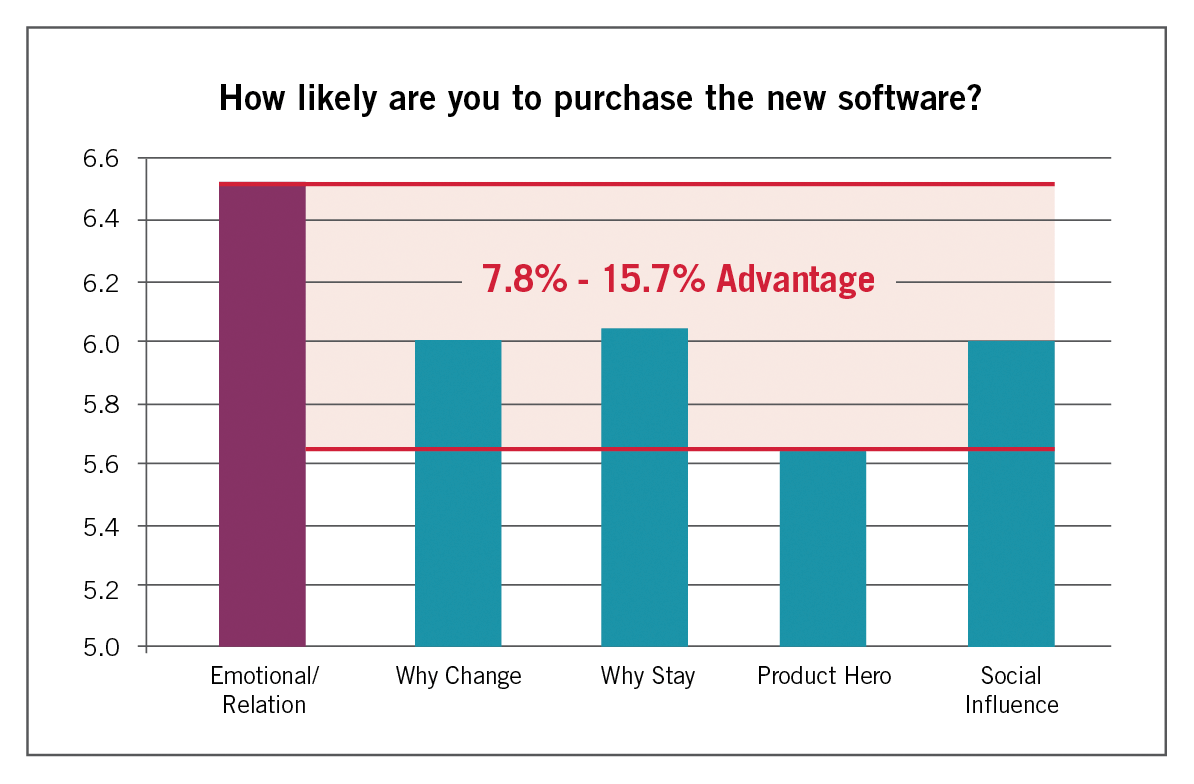“But how do we sell in this situation?”
Research has a way of begetting more research. As soon as we conduct a study that illuminates how to address a certain moment in the purchase cycle, another customer comes along wondering how to handle a different selling scenario.
Once our research revealed the best message for when you’re the outsider trying to defeat the status quo (“Why Change?”), we started hearing from folks wondering what to do when they are the status quo (“Why Stay?”). The big discovery here was that the disruptive message you need to dislodge an incumbent vendor is essentially the opposite of the message you need when you’re trying to retain existing customers.
These studies covered a lot of terrain in the customer lifecycle—two huge moments in the areas of customer acquisition and customer expansion. But as we soon discovered, there were still gaps in the research—other key moments and questions whose buyer psychology profiles needed to be better understood.
One of those questions was this: How do you sell more to an existing customer? How do you address what is traditionally known as an upsell conversation, when you might need to convince customers to migrate to higher-value solutions, whether in the interest of a significant upsell opportunity or because of a material change to a base product?
This moment we’re calling the “Why Evolve?” story. While it seems like it should be relatively easy to convince customers to migrate to higher-value solutions, it seldom is. A Corporate Visions industry survey found that:
- Nearly 60 percent of respondents are only somewhat satisfied or worse when it comes to how well they convert customers to new solutions—both in terms of how fast they convert them and how many are converting.
That’s a problem. Because the survey also found that 86 percent of respondents say this situation is “important” or “very important” to their revenue success and their ability to retain customers.
There’s a lot on the line in the “Why Evolve?” moment. If you’re successful, you create a foundation for better customer experiences and longer-lasting partnerships. If you slip up, your partnerships and revenues stagnate. And those aren’t your only problems…
If you aren’t providing your customers with the most exceptional experiences, you become vulnerable to disruption from competitors who will claim they can. They could even disrupt you out of the equation with promises of superior customer experiences that they can deliver. The issue isn’t so much that you don’t have those capabilities—it’s that you haven’t seized the opportunity to provide them.
That’s what’s at stake. Besides these threats, another reason this moment calls for research is that, on its face, it appears to require something of a hybrid between the “Why Change?” and “Why Stay?” stories. In any case, a moment this important shouldn’t demands more than guesswork or hunches about what might work best. That’s why we put it to the test in brand new research, covered below.
Researching the “Why Evolve?” Moment
For this research we collaborated with Dr. Nick Lee, a Professor at Warwick Business School who has spent nearly 20 years drawing from social psychology, cognitive neuroscience, economics, and philosophy, to develop insights into salespeople and selling.
Our goal was to design a study that responds to the most pressing challenges salespeople face when trying to upsell new solutions to existing customers. There are five main challenges:
- Different enough? It’s hard to be seen as different enough to require action. How do you create a message that’s not what the customer expects—that’s unusual enough to generate interest?
- Important to success? A big part of selling is creating a buying vision in the minds of your customers. How do you craft a message that gets them to see your solutions as vitally important to a vision where they are successful?
- Personally convincing? How do you craft a message that not only shows the value of their business, but also convinces them to become personally invested in propelling that business forward?
- Willingness to change? With so many priorities in play, buyers need to be willing to take this on and embrace change. How do you craft a message facilitates that?
- Intention to purchase? Ultimately, the only thing that matters is whether they purchase or not. How do you craft a message that increases the likelihood of your customer actually buying?
The best message for the “Why Evolve?” moment is one that’s most effective at helping salespeople excel in these areas. Here’s how we set up the study to determine what that message looks like.
The study, conducted online, included 426 participants whom we put into a business-to-business decision-making simulation.
At the outset, participants were randomly assigned to a range of different test conditions. All were told to imagine they were decision-makers in a conversation with a sales rep from their long-term software vendor. The rep is trying to convince them to upgrade from a legacy on-premise version of their business intelligence software to their new cloud-based business analytics solutions.
The five conditions tested include the following message types, summarized below:
- Product as the Hero – This was based on the type of message many companies use to announce new solutions. It’s product-oriented and focused on highlighting the new and improved features and benefits.
- Relationship Reinforcement and Emotion – This message uses emotional language to emphasize the idea that the company and vendor are partners. It’s open about having a frank conversation about the challenges and opportunities in a long-term partnership.
- “Why Change?” – This message has already been proven in our past research to be the message for converting new prospects into customers. It’s disruptive, edgy, and we wanted to test it out in this scenario.
- “Why Stay?” – Our previous research confirmed this message is best for convincing existing customers to renew. We wanted to see how it would hold up in the middle of an existing customer contract, with an upsell in play.
- Social Influence – The premise of this message is that peer pressure is a powerful motivator. This condition shows the buyer that many of their peers are making strides and they can’t afford to get left behind.
After experiencing their respective messages, participants answered a series of questions designed to assess how well the messages performed relative to the challenges highlighted above.
The Best “Why Evolve?” Message
The most effective message across the key areas assessed was the relationship reinforcement and emotion condition, which consistently outperformed the others.
The winning condition is something of a hybrid message, borrowing elements from the disruptive “Why Change?” approach and from the more protectionist “Why Stay?” one. An important implication is that this hybrid message—rather than a message that strictly challenges their situation—is optimal for performing well in an upsell or cross-sell scenario.
And that makes sense. This message isn’t designed for driving big, disruptive changes or getting a customer to renew. It’s about getting a customer to evolve their vision and their buying habits. This message, summarized in the visual below, ensures customers don’t fall back on using your old guard solutions instead of your newest and highest-value innovations.
Don’t leave this message to chance—not when the upside of handling the “Why Evolve?” moment well is so key to your success. By applying this research to your upsell and cross-sell conversations, you’ll stand the best chance of being the vendor who provides the top-notch customer experiences your buyers need to perform.
To get the full study results and additional analysis on the findings, check out our latest State of the Conversation Report
This article originally published in Sales & Marketing Management Magazine










